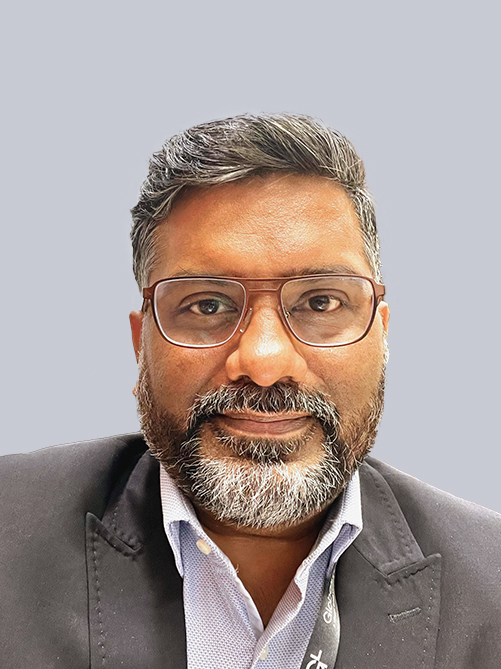- Services
Technology Capabilities
Technology Capabilities- Product Strategy & Experience DesignDefine software-driven value chains, create purposeful interactions, and develop new segments and offerings
- Digital Business TransformationAdvance your digital transformation journey.
- Intelligence EngineeringLeverage data and AI to transform products, operations, and outcomes.
- Software Product EngineeringCreate high-value products faster with AI-powered and human-driven engineering.
- Technology ModernizationTackle technology modernization with approaches that reduce risk and maximize impact.
- Embedded Engineering & IT/OT TransformationDevelop embedded software and hardware. Build IoT and IT/OT solutions.
- Industries

Digital Business Transformation
Achieve tangible progress in your journey to become a digitally enabled enterprise
Let’s dive into your business problems and opportunities—and build plans for technology-enabled strategies and solutions.
You bring your toughest challenges. We’ll supply 20+ years of experience in digital transformation.
How we helpDrive successful digital strategies
Technology may not be your core business, but it’s increasingly critical to your success. Bring GlobalLogic your business problems and growth opportunities. We’ll show how digital technologies can help, and build actionable roadmaps for turning digital strategies into business results.
 0impact on clients’ balance sheets0+digital professionals working across 5 continents0+transformation programs completed0+industry segments supportedOur capabilities
0impact on clients’ balance sheets0+digital professionals working across 5 continents0+transformation programs completed0+industry segments supportedOur capabilitiesCapturing value through digital transformation
Trust GlobalLogic to help you plan and execute effective digital transformation strategies.
Learn moreTransformation Advisory
Identify and understand opportunity and impact areas for digital transformation. Define your transformation solution, roadmap, target outcomes, and metrics for tracking progress.
Learn moreTransformation Execution & Governance
Define an organizational structure and ways of working to support your transformation journey. Execute your roadmap across people, processes, and technologies, measuring and tracking success to deliver value to your business.
Learn moreUser and Market Research
Gather data, then turn it into insights and actionable plans. Using quantitative, qualitative, and algorithmic techniques, we help you deeply understand your market and audience to drive product-market fit, growth, and user satisfaction.
Learn moreProduct and UX/UI Design
User wireframes, user flows, sitemaps, component libraries, and more to design the product experience. This includes crafting the structure, look, and functionality, while considering the medium, brand, accessibility, and best practices.
Learn moreGlobalLogic AI-Powered SDLC
Reinvent software development with AI-driven precision and productivity, harnessing AI-driven, human-guided approaches to work smarter, get to market faster, and lower costs.
Learn moreAI-Enabled Agile
Pioneer innovation solutions that shape the future of software development by harnessing our expertise in AI practices and Agile.
Learn moreProduct Launch and Adoption
Just because you build it doesn’t mean users will come. Prepare for a smooth launch and drive adoption by partnering with Method on change management and strategic launch plans that consider your users, culture, constraints, and more.
Our workCase studies
Discover how we’re engineering impact with clients around the world
View all our case studiesLeaders in Digital Business Transformation
We’re passionate about engineering impact for and with our clients.
 Manav Maholtra
Manav MaholtraSenior Vice President, Business Solutions
Leads the charter for taking Digital Business Transformation offering to our clients globally
 Rohit Gawale
Rohit GawaleDirector, Experience Design
Dedicated to creating best-in-class CX/UX for our clients in their Digital Transformation
 Thomas Shipley
Thomas ShipleyPrincipal, Transformation Consultant
Focused on collaborating with clients and defining the What, How and When of their Digital Transformation roadmap journey
Featured insights
Explore fresh thinking from GlobalLogic’s strategists and engineers.
See allBlogs19 April 2023Digital Transformation 101: Leveraging Technology to Drive Business Growth …
Transformation AdvisoryTransformation Execution and GovernanceUser and Market ResearchCross-Industry Blogs18 August 2023
Blogs18 August 2023Types of Migration & Tips for Digital Transformation Success
Explore different types of migration and find tips to combat…
AnalyticsData EngineeringCross-Industry BlogsGlobalLogic25 June 2025
BlogsGlobalLogic25 June 2025Building the Future of Financial Services: Data, AI & Cloud-Native …
The financial services industry has reached a point of no return. The last …
AI-Powered SDLCGenAIFinancial Services
Why GlobalLogic?
We drive meaningful business outcomes for Digital Business Transformation clients by addressing challenges in three key areas.

Designed for Desirability
GlobalLogic brings a product (not project) mindset and commitment to aligning your roadmap to your vision and business imperatives.
Engineered for Excellence
We are experienced in assembling scalable, flexible teams of engineers, giving you access to the talent required to power your digital transformation.
Curated for Intelligence
We are experts in using data to assess challenges and build solutions that deliver business value and outcomes.
FAQsYour Digital Business Transformation questions, answered
Learn more about Digital Business Transformation services at GlobalLogic.
-
How does Digital Business Transformation help my company grow and stay competitive?Drive growth by improving your products and services, optimizing customer engagement, and creating new revenue streams. Unlock faster time-to-market, operational efficiency, and differentiated offerings to get—and stay—ahead of your competitors. We can help you do that by leveraging the latest digital technologies in your business functions or operations.
-
How does GlobalLogic support a transformation journey?Our digital transformation consultants collaborate with you at every phase—from understanding your specific business outcomes and defining your digital strategy to recommending the right transformation organization to execute and track business value. At each step, we deliver expertise, resources, and continuous support to help you reach your goals.
-
Who can benefit from GlobalLogic’s Digital Business Transformation offering?In short, any company looking for digital business enablement or a digital technology partner to modernize operations, improve user experience, and/or power competitive advantage. If those are among your goals, consider engaging GlobalLogic as your digital transformation partner. We offer a global talent pool that includes industry SMEs and technology consultants, along with 20+ years of experience delivering successful transformations.
-
How do you help organizations succeed through digital transformations?We apply a well-structured approach for planning, execution, and governance. Our approach helps to ensure that success KPIs & metrics are defined upfront and are continuously monitored and tracked throughout the transformation journey. Our strong program governance across key milestones helps in measuring the success of the transformation program quantitatively and qualitatively.
Get in touchLet’s start engineering impact together.
GlobalLogic provides unique experience and expertise at the intersection of data, design, and engineering.



